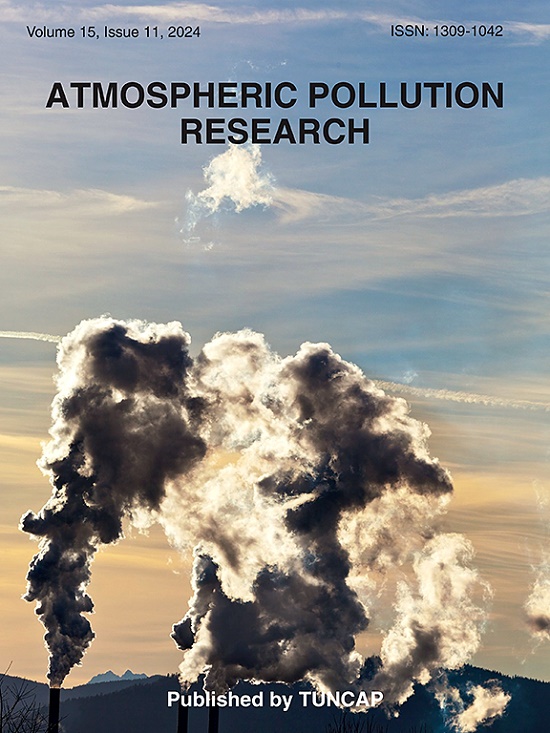Exploring PM2.5 pollution in a representative Northern Chinese county: Insights for air quality management
IF 3.9
3区 环境科学与生态学
Q2 ENVIRONMENTAL SCIENCES
引用次数: 0
Abstract
Counties have served as fundamental administrative units in China since the Qin Dynasty (221–206 BC), a tradition that continues today with hundreds of millions of residents living in county-level cities. Unlike higher-level cities such as municipalities and prefecture-level cities, counties differ significantly in size, development level, and development model, which can lead to distinct PM2.5 pollution patterns. This study focuses on Yishui County, a representative county in northern China, to explore its PM2.5 pollution characteristics and source contributions over a one-year period. Furthermore, the study compares Yishui's pollution profile with those of higher-level cities to provide insights into the relationship between development models and air quality. The annual average PM2.5 concentration in Yishui was 67.8 μg/m3. Source apportionment using Discretized Normalized Positive Matrix Factorization (DN-PMF) identified six primary sources: dust (28.3%), secondary inorganic aerosols and residential coal combustion (SIA/RCC, 25.7%), vehicle emissions (24.6%), coal combustion (10.3%), industrial processes (9.1%), and biomass burning (2.0%). Dust was the dominant contributor, a notable divergence from patterns in higher-level cities. This disparity is likely attributed to Yishui's heavy reliance on real estate development as a primary economic driver, which significantly increases construction dust emissions. These results emphasize the impact of urbanization and economic structure on PM2.5 pollution, indicating that other counties in northern China undergoing similar development stages may face comparable air quality challenges.

中国北方某县PM2.5污染研究:对空气质量管理的启示
自秦朝(公元前221-206年)以来,县一直是中国的基本行政单位,这一传统一直延续到今天,数亿居民生活在县级市。与直辖市和地级市等更高一级的城市不同,县在规模、发展水平和发展模式上存在显著差异,这可能导致不同的PM2.5污染模式。本研究以中国北方代表性的沂水县为研究对象,研究其1年的PM2.5污染特征和污染源贡献。此外,该研究还将沂水的污染状况与更高级别城市的污染状况进行了比较,以深入了解发展模式与空气质量之间的关系。宜水市PM2.5年平均浓度为67.8 μg/m3。利用离散化归一化正矩阵分解(DN-PMF)对污染源进行了分析,确定了6个主要污染源:粉尘(28.3%)、二次无机气溶胶和居民燃煤(SIA/RCC, 25.7%)、汽车排放(24.6%)、煤炭燃烧(10.3%)、工业过程(9.1%)和生物质燃烧(2.0%)。沙尘是主要因素,这与高层城市的模式明显不同。这种差异可能是由于沂水严重依赖房地产开发作为主要经济驱动力,这大大增加了建筑粉尘排放。这些结果强调了城市化和经济结构对PM2.5污染的影响,表明中国北方其他处于类似发展阶段的县可能面临类似的空气质量挑战。
本文章由计算机程序翻译,如有差异,请以英文原文为准。
求助全文
约1分钟内获得全文
求助全文
来源期刊

Atmospheric Pollution Research
ENVIRONMENTAL SCIENCES-
CiteScore
8.30
自引率
6.70%
发文量
256
审稿时长
36 days
期刊介绍:
Atmospheric Pollution Research (APR) is an international journal designed for the publication of articles on air pollution. Papers should present novel experimental results, theory and modeling of air pollution on local, regional, or global scales. Areas covered are research on inorganic, organic, and persistent organic air pollutants, air quality monitoring, air quality management, atmospheric dispersion and transport, air-surface (soil, water, and vegetation) exchange of pollutants, dry and wet deposition, indoor air quality, exposure assessment, health effects, satellite measurements, natural emissions, atmospheric chemistry, greenhouse gases, and effects on climate change.
 求助内容:
求助内容: 应助结果提醒方式:
应助结果提醒方式:


